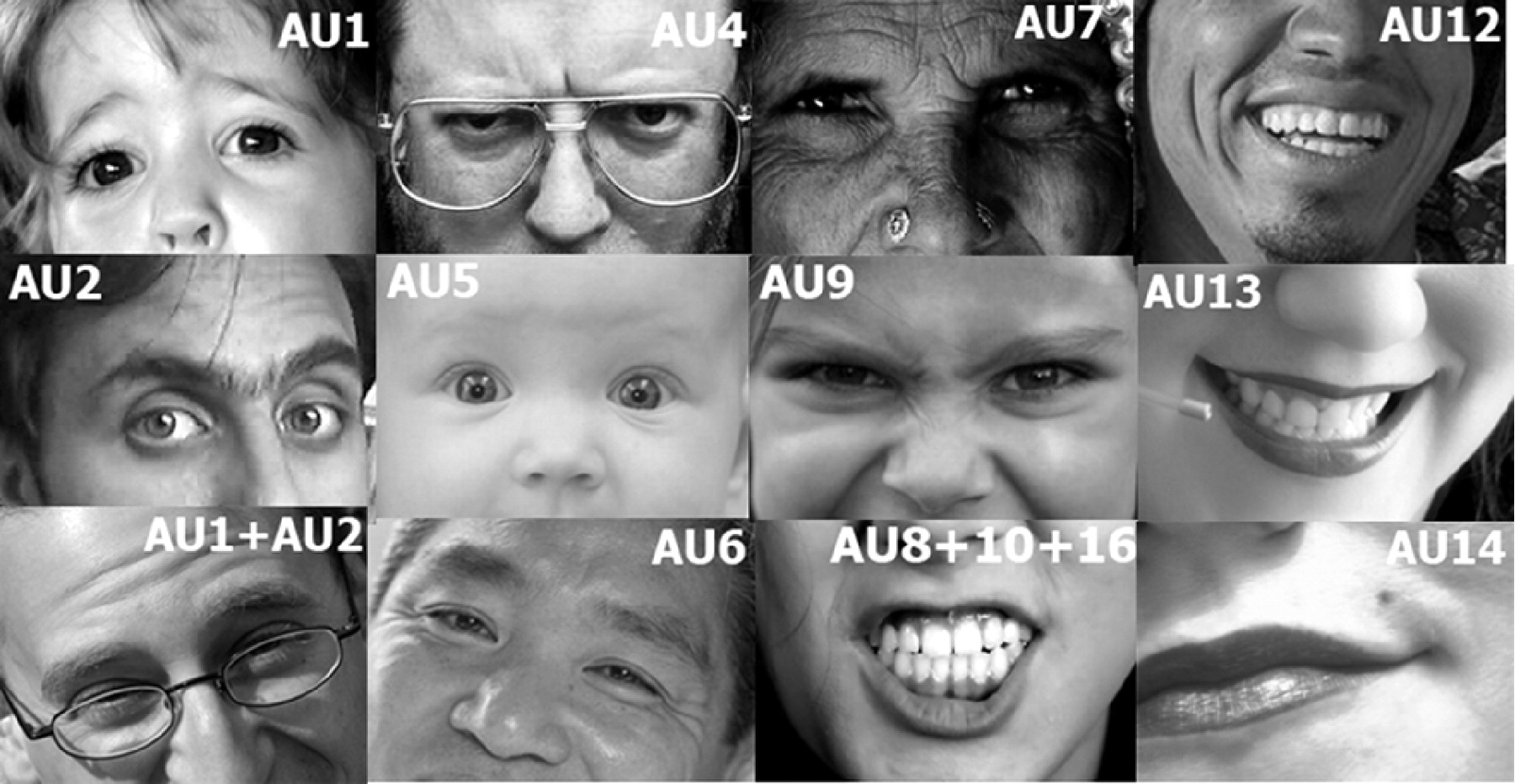-
Notifications
You must be signed in to change notification settings - Fork 1.9k
Action Units

Facial Action Coding System (FACS) is a system to taxonomize human facial movements by their appearance on the face. Movements of individual facial muscles are encoded by FACS from slight different instant changes in facial appearance. Using FACS it is possible to code nearly any anatomically possible facial expression, deconstructing it into the specific Action Units (AU) that produced the expression. It is a common standard to objectively describe facial expressions.
OpenFace is able to recognize a subset of AUs, specifically: 1, 2, 4, 5, 6, 7, 9, 10, 12, 14, 15, 17, 20, 23, 25, 26, 28, and 45.
You can find more details about FACS and AUs here and here
AUs can be described in two ways
- Presence - if AU is visible in the face (for example AU01_c)
- Intensity - how intense is the AU (minimal to maximal) on a 5 point scale
OpenFace provides both of these scores. For presence of AU 1 the column AU01_c in the output file would encode 0 as not present and 1 as present. For intensity of AU 1 the column AU01_r in the output file would range from 0 (not present), 1 (present at minimum intensity), 5 (present at maximum intensity), with continuous values in between.
NOTE that the intensity and presence predictors have been trained separately and on slightly different datasets, this means that the predictions of both might not always be consistent (e.g. the presence model could be predicting AU as not being present, but the intensity model could be predicting its value above 1).
OpenFace is able to extract Action Units both from images, image sequences and videos
Use FaceLandmarkImg project and executable for this, it will output AU predictions for each image. Please note that the accuracy of AU prediction on individual images is not as high as that of AU prediction on videos because videos allow for person specific calibration. For more details of how to perform the extraction see here
If you want to extract facial action units from image sequence or a video you should use FeatureExtraction project and executable for this. This will provide AU presence and intensity predictions for each frame in a video.
If you want to extract facial action units from videos that contain multiple faces you should use FaceLandmarkVidMulti project. NOTE that the extracted AUs will not be as reliable as in the single person in the video case, due to person specific feature calibration and post-processing which is currently not supported in multi-face case.
OpenFace uses two types of AU prediction models - static and dynamic. The static models only rely on a single image to make an estimate of AU presence or intensity, while dynamic ones calibrate to a person by performing person normalization in the video, they also attempt to correct for over and under prediction of AUs. By default OpenFace uses static models on images and dynamic models on image sequences and videos.
However, some video sequences do not have much dynamic range - the same expression is held throughout the video, this means that post calibration will not be helpful and might in fact be harmful, for those video sequences I recommend using -au_static flag which tells OpenFace not to perform dynamic calibration and to use only static models for AU prediction.
The code for training AU prediction models is available here, it also includes a readme explaining how to go around with training the models.
The datasets that were used for training AU recognition models are as follows: